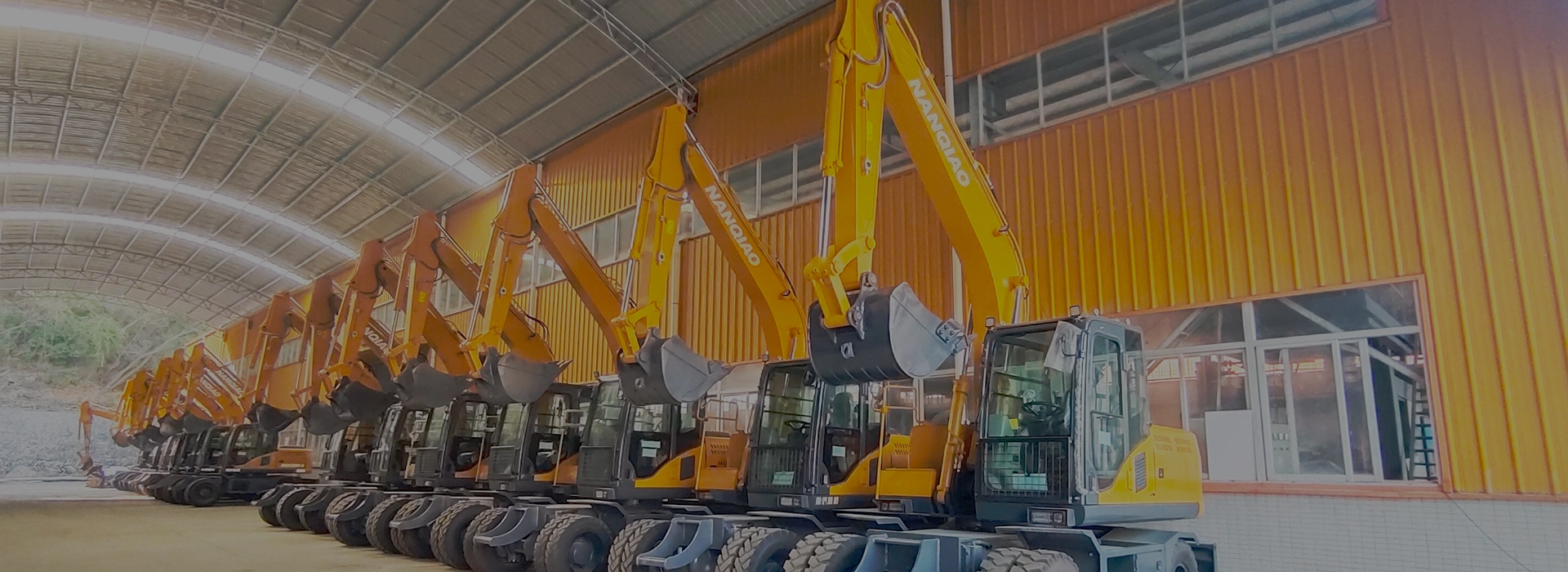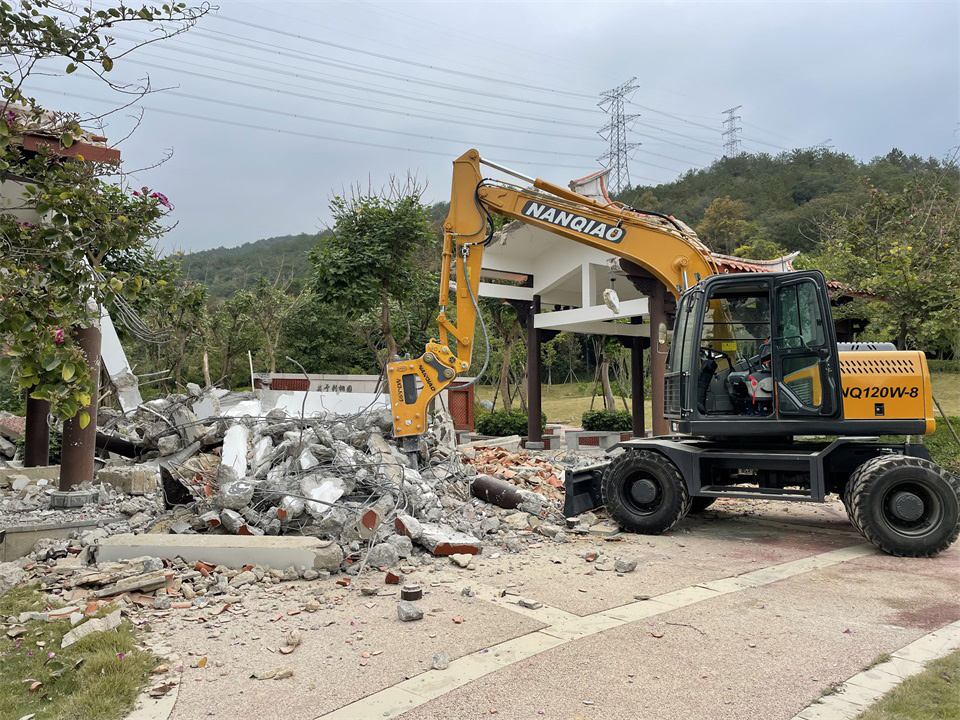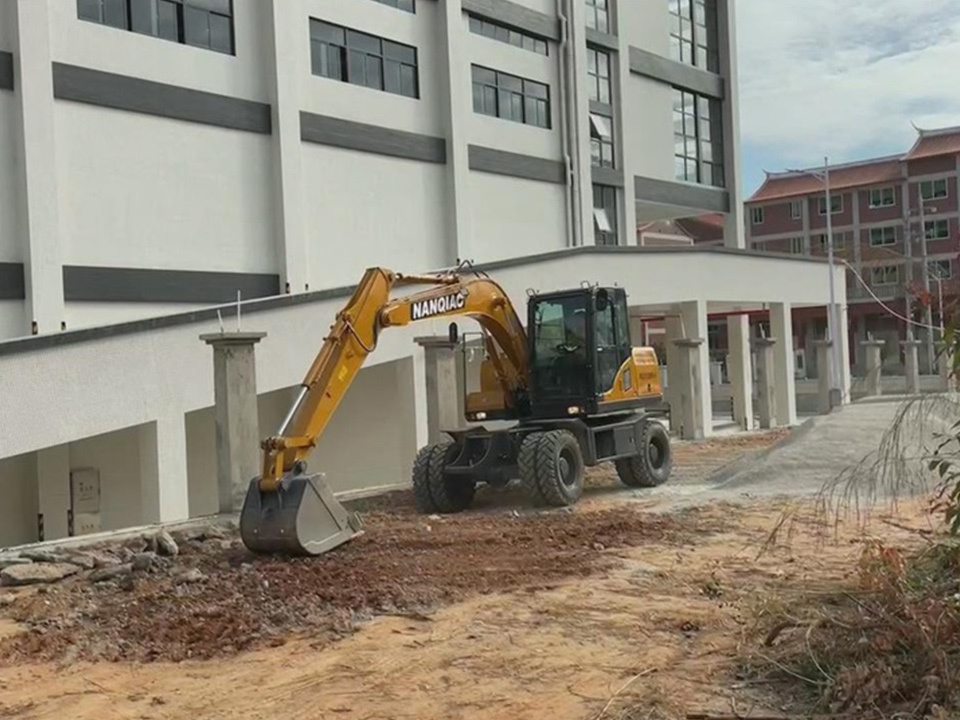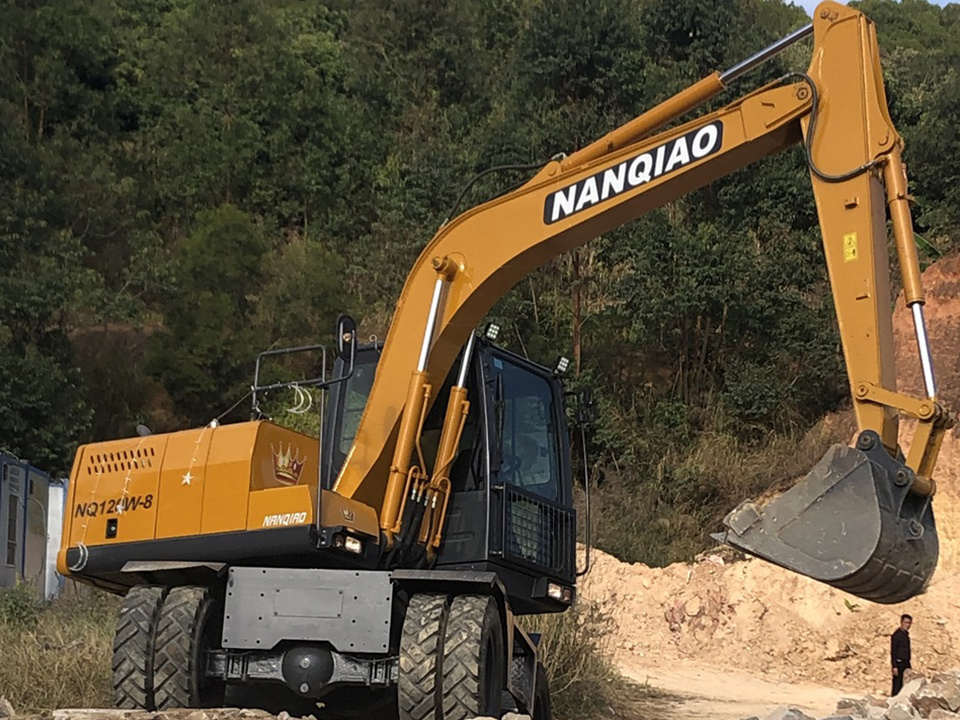Common Diagnosis Methods for Hydraulic System Faults of Excavators
Time of issue:
2022-04-12 11:01
The diagnosis of faults in the hydraulic system of construction machinery during on-site construction is often limited by on-site conditions, and it is required to eliminate the faults as soon as possible to avoid affecting the construction progress. This article introduces several commonly used on-site fault diagnosis methods for hydraulic systems of construction machinery for reference.
Visual inspection method
For some relatively simple faults, parts can be inspected by means of sight, hand mold, ear listening, and sniffing. For example, visual inspection can detect faults such as cracks, oil leaks, looseness, and deformation, enabling timely repair or replacement of accessories; Holding the oil pipe (especially the rubber hose) with your hand can cause a vibration sensation when there is pressure oil flowing, but this phenomenon does not occur when there is no oil flowing or the pressure is too low. In addition, hand touch can also be used to determine whether the lubrication of hydraulic components with mechanical transmission components is good. Feel the temperature change of the component housing with your hand. If the component housing overheats, it indicates poor lubrication; Hearing can determine the point of failure and the extent of damage caused by damage to mechanical components. Faults such as hydraulic pump suction, overflow valve opening, and component jamming can all produce abnormal sounds such as water hammer or water hammer; Some components can emit a peculiar smell due to overheating, poor lubrication, cavitation, and other reasons. The fault point can be determined by sniffing.
2. Exchange diagnosis method
This method should be used when there is a lack of diagnostic instruments at the maintenance site or when the inspected components are relatively precise and should not be disassembled. First, remove the suspected faulty components and replace them with new ones or components of the same model that work normally on other machines for testing to see if the faults can be eliminated. Then, a diagnosis can be made. For example, the working pressure of the hydraulic system of a Carter E200B excavator working device is suspected to be due to a failure of the main safety valve based on experience. Therefore, the main safety valve on the same type of excavator on the site was replaced with the safety valve, and the operation was normal during the test run, confirming that the suspicion was correct. Using the swap diagnosis method to check faults may be cumbersome to operate due to limitations such as structure, on-site component storage, or inconvenient disassembly. However, for components such as balance valves, overflow valves, and one-way valves that are small in size and easy to disassemble, this method is relatively convenient. The replacement diagnosis method can avoid the performance degradation of hydraulic components caused by blind disassembly. If the suspected main safety valve is directly removed and disassembled without using the replacement method to check for the above faults, if the component is not defective, it may affect its performance after reassembly.
3. Instrument measurement inspection method
The instrument measurement inspection method is to determine the fault point of the hydraulic system by measuring the pressure, flow rate, and oil temperature of the hydraulic oil in each part of the system. In general on-site testing, due to the hydraulic system failure often manifested as insufficient pressure, easy to detect; However, the detection of flow is relatively difficult, and the magnitude of flow can only be judged erroneously by the speed of action of the actuator. Therefore, in on-site testing, more methods are used to detect system pressure. For example, a Hitachi EX220-5 excavator was found to be drifting to the right during operation, and it is suspected that the left and right pressures of the walking system are uneven. When detecting the pressure of the traveling system, it was found that the left side was 32MPa and the right side was 26MPa. After adjusting the pressure of the right traveling safety valve, the fault was eliminated. Another example is an RS-425 road mixer made in the United States, which has a failure phenomenon of inability to walk. During the inspection, it was found that when the hydraulic motor pressure was 10 MPa, the drive wheel did not move, that is, the motor did not rotate, which fully indicates that the internal leakage of the motor was relatively serious. During disassembly and inspection of the motor, it was found that the valve plate and plunger pair were severely worn, indicating that the judgment was correct. Grind the valve plate, replace the plunger pair, and everything is normal during the test run after assembly.
4. Principle Reasoning Method
The basic principles of the hydraulic system of construction machinery are all made up of different hydraulic components and matched according to the circuit combination of the hydraulic system. When a fault occurs, it can be analyzed and reasoned based on this to preliminarily determine the location and cause of the fault, apply the appropriate medicine to the case, and quickly eliminate it. For example, there is a Carter E200B excavator that starts normally when there is no working load, operates smoothly, and accelerates strongly. However, under normal working load, the engine emits black smoke and the rotational speed decreases. According to the situation when there is no working load, the fault of insufficient engine power can be eliminated, and the cause can only be found in the hydraulic system. According to the condition under normal working load, it can be preliminarily determined that the engine is in an overloaded working state, and then it is necessary to analyze based on the working principle of the hydraulic pump. The hydraulic system of the excavator adopts a dual pump constant power variable system.
Therefore, when the working device operates normally, that is, when the output pressure of the hydraulic pump reaches the rated value, but the output flow is not adjusted to the matching value, the engine is in an overloaded working state. After disassembling the servo hydraulic cylinder, it was found that the spring had been broken, causing the above fault. After replacing the spring, the operation returned to normal.
For faults in the on-site hydraulic system, based on the working principle of the hydraulic system, the cause of the fault can be analyzed through forward reasoning on the system diagram in the order of power component → control component → execution component. If the boom of an excavator is unable to work, from a theoretical analysis, it is believed that the inability to work is generally caused by a decrease in oil pressure or flow. From the system diagram, the possible factors causing pressure drop or flow reduction include: first, the oil tank, such as lack of oil, clogged oil suction filter, and blocked vent holes; The second is internal leakage in the hydraulic pump, such as increased fitting clearance of the plunger pair of the hydraulic pump; The pressure adjustment of the main safety valve on the control valve is too low or there is serious internal leakage; The set pressure of the boom hydraulic cylinder overload valve is too low or there is serious internal leakage; The fifth is that the oil return path is not smooth. After considering these factors, eliminate certain factors based on existing inspection results, narrow the scope of the fault until the fault point is found and eliminated.
In the field hydraulic system fault diagnosis, it is necessary to master some rules or common sense according to the working principle of the system; Firstly, analyze whether the fault process is gradual or abrupt. If it is gradual, it is generally due to changes in the original size and fit caused by wear and loss of original function; If it is a sudden change, it is often caused by sudden damage to components, such as broken springs, damaged seals, stuck moving parts, or clogged dirt. The second is to distinguish between vulnerable parts and non vulnerable parts, or moving parts under high frequency and heavy load, or hydraulic components that are prone to failure, such as plunger pairs of hydraulic pumps, valve plate pairs, variable displacement servo, and hydraulic cylinders. Components that are under low frequency, light load, or basically relatively static conditions are less likely to fail, such as directional valves, sequence valves, and spool valves. Mastering these rules can play a positive role in quickly determining the fault location.
Previous:
2022-10-28
Fujian excavator: Let's talk about the high engine oil and water temperature of small excavator
Fujian excavator: Let's talk about the high engine oil and water temperature of small excavator High engine oil and water temperature of small excavator During the construction and operation of construction machinery and equipment, high engine temperature or high water temperature is a common phenomenon. So what should be done when the temperature of engine oil and water is too high at the same time?
2022-11-08
Fujian excavator introduces the operation method of large excavator
Fujian excavator introduces the operation method of large excavator. It is also a method-type technical work that requires several smooth postures, so the operators need to learn to use the swing method in addition to skilled training. I will talk to you about the swing methods of large excavators today.
2022-12-19
Oil burning of large excavators is one of the serious faults of excavator engines. Oil burning of excavator engines means that the oil consumption of excavators is higher than that of excavators of the same model, and there is blue and black smoke during operation. The excavator manufacturer will take you to see how to deal with oil burning of large excavators?





